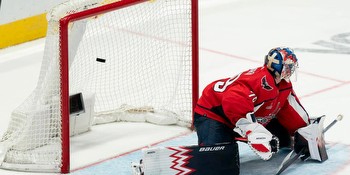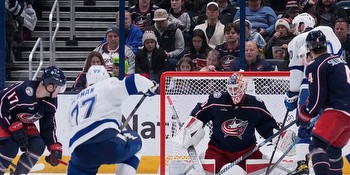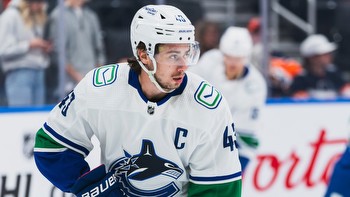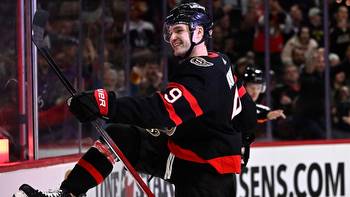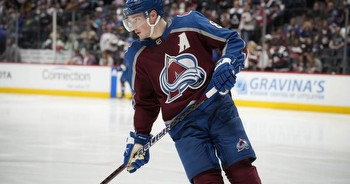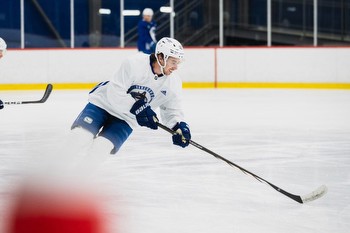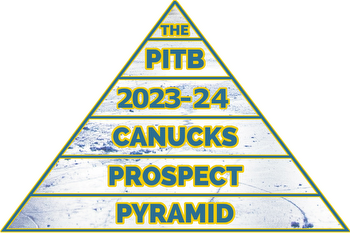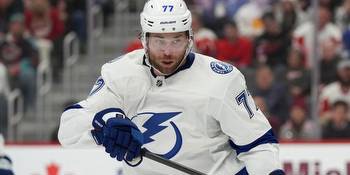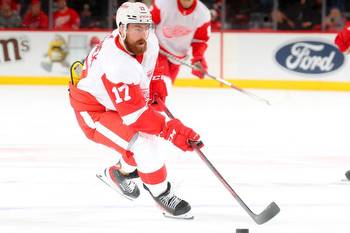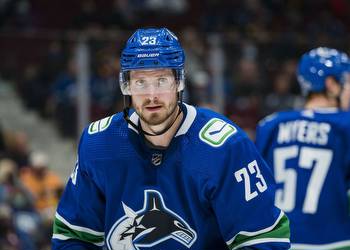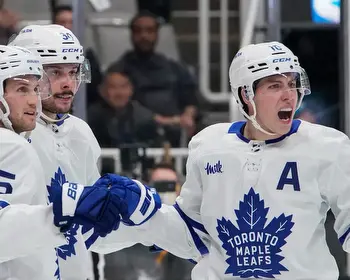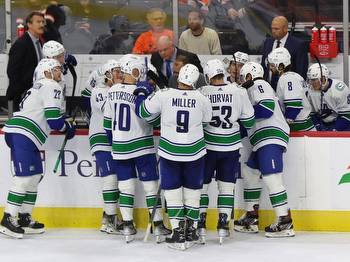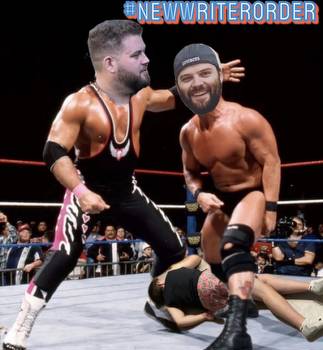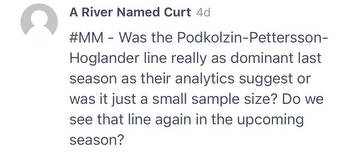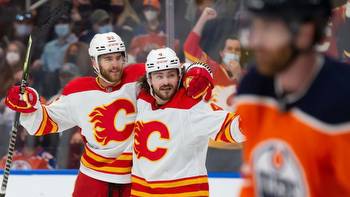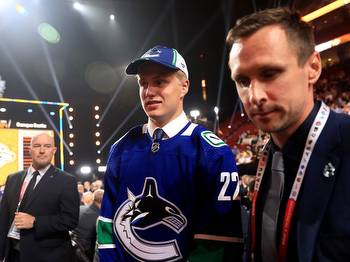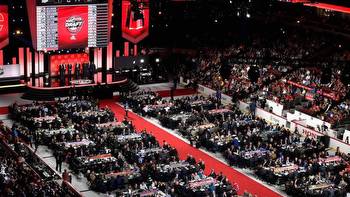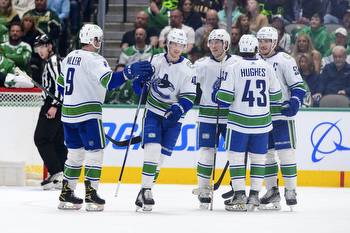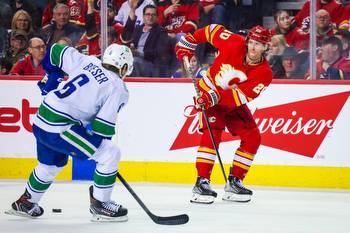What if the Canucks traded for Victor Hedman in 2009?
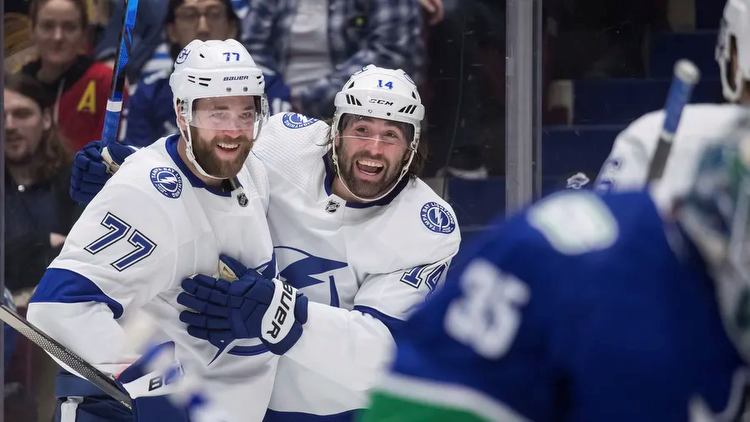
Brian Burke claimed the Vancouver Canucks made a play for the second-overall pick in the 2009 NHL Entry Draft.
Until Quinn Hughes, the Vancouver Canucks had never had a true number-one defenceman in their history.
But, according to Brian Burke, they came awfully close in 2009.
At the time, Burke was the general manager of the Toronto Maple Leafs. In a behind-the-scenes video of the Leafs’ preparations for the draft, Burke ran through some potential scenarios with his scouting staff. The Leafs held the seventh-overall pick in the 2009 NHL Entry Draft and Burke was exploring the possibility of moving up.
Burke, running through what he had been hearing around the league, revealed that the Canucks had allegedly made a run at the second-overall pick, held by the Tampa Bay Lightning.
“Vancouver has made a major effort to get the second pick out of Tampa Bay,” said Burke. “We heard they offered — again, this is all second-hand, so we don’t know if it’s true — we heard they offered [Alex] Burrows, [Kevin] Bieksa, and their own pick and those are two pretty good players.”
The quote caused a stir in Vancouver when the video first came out back in 2009, with the Canucks denying they made any such offer. General manager Mike Gillis went as far as talking specifically to Burrows and Bieksa to deny the rumour.
“Because it was coming from a general manager from another team,” said Gillis. “When something’s written in an Ottawa newspaper by Bruce Garrioch, everyone laughs about it. But when it comes from a person in authority, who is supposed to have inside knowledge of these things, it lends itself to thinking there may be some truth to it. I wanted to make sure those guys knew [it wasn’t true]. We are trying to win here.
“We didn’t go out this summer to trade good players away for draft picks.”
An "outlandish" trade for a Hall-of-Famer
At the time, Jason Botchford called the alleged trade offer “outlandish” because of the inclusion of core Canucks Burrows and Bieksa.
In retrospect, the prospective trade seems outlandish in the other direction.
The consensus second-overall pick — and who the Lightning eventually selected — was Victor Hedman, a smooth-skating 6’6” defenceman who had just put up 21 points in 43 games against men in the top Swedish league, then known as the Elitserien. That was and still is a record for an under-19 defenceman in that league.
Hedman has gone on to a surefire Hall-of-Fame career, with a Norris, a Conn Smythe, and six First or Second-Team All-Star selections. He’s one of the best defencemen of his generation and has helped lead the Lightning to two Stanley Cups.
If the Canucks had been able to get Hedman for Burrows, Bieksa, and the 22nd-overall pick — which they used on Jordan Schroeder — it would go down as one of the best trades in Canucks history.
But it’s also a trade that would have some serious and immediate repercussions. Let’s take a look at what might have been if the Canucks did, in fact, make the offer that Burke mentioned and the Lightning said yes to the deal.
The cost for the Canucks would arguably make sense
At the time, Burrows had just established himself as a legitimate top-six winger. He played half the season on the second line with Ryan Kesler, then got bumped up to play with the Sedins midseason and thrived. He put up 28 goals and 51 points in 82 games and even earned a handful of Selke votes for his excellent defensive game and penalty killing.
Bieksa, meanwhile, was the Canucks’ top defenceman. He was coming off the second 40+ point season of his career and combined his offensive prowess with a physical defensive game. He played in every situation for the Canucks, with a team-high 23:29 per night in ice time, and was a right-hand shot, to boot.
A top-six, Selke-caliber winger and a top-pairing, right-shot defenceman, combined with a late first-round pick? That actually sounds like a pretty reasonable offer for the second-overall pick.
While the Canucks were amping up to become Stanley Cup contenders, there would still be a certain logic to making this deal. Burrows and Bieksa were both 28 years old and the Canucks might have been concerned that a decline was on the way.
Burrows had found chemistry with the Sedins but only for less than half of a season. It would be understandable to think that success might have been fleeting. Alternatively, they might have felt that the Sedins could play with just about anyone — in 2009 free agency, the Canucks went on to sign Mikael Samuelsson, who also fit well with the Sedins.
Bieksa was fantastic for the Canucks but they were also looking to get better on the blueline. The Canucks traded for Christian Ehrhoff a couple of months later, which bumped Bieksa to the second pairing. Meanwhile, Hedman represented a long-term upgrade on defence.
Would the Canucks be better on defence?
Hedman made the jump directly to the NHL after he was drafted and averaged 20:51 per game for the Lightning. It’s reasonable to assume Hedman would make a similar jump for the Canucks, who would have needed a defenceman to step into the lineup for the now-absent Bieksa.
It’s worth noting that the Lightning signed Mattias Öhlund in 2009 to mentor Hedman. It’s possible the Canucks might’ve hung onto Öhlund to do the same, though it would have given the Canucks too many left-side defencemen. That task might have instead fallen to Edler.
That said, Hedman is a huge fan of the Sedins, so it's not like he would have had a shortage of mentors in Vancouver.
Assuming the Canucks let Öhlund go to free agency, that would have given the Canucks the following defence corps in the 2009-10 season:
Alex Edler - Christian Ehrhoff
Willie Mitchell - Sami Salo
Victor Hedman - Shane O’Brien
Aaron Rome
Given Salo’s injury troubles, it’s likely that one of Mitchell or Hedman would have been moved to the right side at times.
That's a pretty good defence corps, particularly with Hedman comfortably playing a lesser role than he was asked to do in Tampa Bay. Hedman and Salo could have played together on a very strong second power play unit with Ryan Kesler and Mason Raymond.
Hedman’s ascension would have made the Canucks all the more willing to move on from Mitchell in the 2010 offseason but the oft-injured Salo and no Bieksa would have given the Canucks an even greater need on the right side. That means they likely still make their 2010 trade for Keith Ballard.
The real question is whether the Canucks would sign Dan Hamhuis if they already had Hedman. They likely don’t though perhaps they would aim to sign a right-shot defenceman instead, such as Pavel Kubina or Zbynek Michalek.
Let’s say in that scenario, the Canucks outbid the Pittsburgh Penguins for Michalek, a solid defensive defenceman who excelled on the penalty kill. They would have the cap space to do so with Hedman still on an entry-level contract.
Here’s the Canucks’ defence for the 2010-11 season in this scenario:
Alex Edler - Christian Ehrhoff
Victor Hedman - Zbynek Michalek
Andrew Alberts - Keith Ballard
Aaron Rome
Sami Salo (when healthy)
That second pairing generally seems comparable to Hamhuis and Bieksa, but keep in mind that Hedman was still just 20 years old and didn’t really hit his stride until a few years later. And it wasn’t until he was 26 in the 2016-17 season that Hedman truly became one of the best defencemen in the NHL.
Part of what made the 2010-11 Canucks so hard to play against is that, while they lacked a true number-one defenceman, they had four top-pairing caliber defencemen — arguably five when Salo was healthy.
Hamhuis and Bieksa were one of the best shutdown pairings in the NHL, which freed Edler and Ehrhoff up to get a ton of offensive zone starts with the Sedin line. Would a 20-year-old Hedman be able to play a similar shutdown role alongside Michalek? Maybe not to the same extent.
That said, Hedman’s defensive game was far more advanced than his offensive game when he came into the league. He was an excellent penalty killer early on thanks to his reach and defensive reads. The points didn’t come until later in his career, but maybe he could have still played that shutdown role for the Canucks in 2010-11.
Without someone like Michalek, however, a second pairing of Hedman and Ballard wouldn't cut the mustard.
Do the 2011 Canucks go on a long playoff run without Burrows and Bieksa?
Here’s where things get interesting. The 2010-11 Canucks were a powerhouse — one of the most dominant teams of the salary cap era. Losing Burrows hurts, giving the Canucks one fewer options with the Sedins, but they could have looked to free agency to add forward depth.
Samuelsson likely would have been the full-time winger for the Sedins, which would put a damper on the second line, as he fit well with Ryan Kesler and Mason Raymond. That means Jeff Tambellini, who was quite good that season when placed into a top-six role, likely would have been used more on the second line.
With all that mind, the Canucks would have still been a wagon without Burrows and Bieksa, even if Burrows’ 26 goals and 48 points that season would have been hard to replace, not to mention his impact on the penalty kill.
The intangibles of Burrows and Bieksa, who were heart-and-soul players, might have been even more difficult to replace. Both players played a big role in the locker room in terms of both keeping things light but also their dedication and drive. It would have been a very different room without those two players.
And then there’s the playoffs.
The 2011 playoffs were Hedman’s first with the Lightning and he was solid, though not spectacular. He was second on the Lightning in ice time, averaging 22:16 per game, and he had 6 points in 18 games. He helped the Lightning get to within one game of the Stanley Cup Final before losing to the Bruins in Game 7.
Hedman definitely would have helped the Canucks in the 2011 playoffs, but let’s keep in mind that Bieksa led the Canucks in ice time in those playoffs, averaging 25:41 per game, and he also had 5 goals and 5 assists. Bieksa played a massive role for the Canucks in the 2011 playoffs.
That’s not to mention that Burrows and Bieksa scored the two biggest goals of the playoffs that year. Burrows scored the goal that slayed the dragon, while Bieksa sent the Canucks to the Stanley Cup Final with the stanchion goal.
Do the Canucks get past the Chicago Blackhawks in the first round without Burrows? Do they get to the Stanley Cup Final without Bieksa? It’s hard to say.
No Art Ross — and no Hall of Fame — for the Sedins?
Perhaps the biggest repercussion for the Canucks is that Daniel and Henrik Sedin might never have had their best seasons without Burrows on their wing.
As good as the Sedins were, they hit another level with the scrappy, underdog Burrows winning the puck on the forecheck and creating havoc in front of the net. Burrows was a unique fit with the Sedins, combining hockey sense and grit in equal measure.
Without Burrows, do the Sedins win back-to-back Art Ross trophies in 2010 and 2011?
Burrows was involved in 41 of Henrik’s 112 points in the 2009-10 season and 30 of Daniel’s 104 points in the 2010-11 season. The Sedins obviously would have still been phenomenal players in those seasons but all it takes is just a few points to no longer lead the NHL in scoring and fall just short of winning the Art Ross.
Without winning the Art Ross in those years, do the Sedins also fall short of winning the Hart Trophy and Ted Lindsay Award? And, without those major awards, then are the Sedins no longer first ballot Hall-of-Famers?
A problem of timing
The real issue with this scenario is one of timing.
Hedman might have been able to extend the Canucks' success as he continued to develop after the 2010-11 season. Maybe they manage to avoid first-round knockouts in 2012 and 2013, but it's hard to imagine them going much further in those years.
It wasn't until 2016-17 that Hedman made his first post-season All-Star Team and finished top-three in Norris voting after putting up 72 points in 79 games. At that same time, the 36-year-old Sedins were on a steep decline, putting up 50 and 44 points in their penultimate season. That team was led in scoring by Bo Horvat, who had just 50 points in 81 games.
Hedman’s prime as a player simply wouldn’t overlap with the primes of the Canucks’ best players, leaving the team scrambling to retool or rebuild around their new franchise player.
Perhaps the Canucks’ attempts to retool would have been more successful with a stud defenceman like Hedman to build around. Maybe the Sedins’ decline could have been forestalled with Hedman delivering them the puck.
But it’s also easy to see how Hedman’s prime could have been wasted while playing with an aging, declining team.
From 2017 to 2022, Hedman made six-straight post-season All-Star Teams and finished in the top three of Norris voting, winning the Norris in 2018. In that same timeframe, the Canucks made the playoffs just once.
Hedman likely could have gotten the Canucks to the playoffs a couple more times in those years but they wouldn’t have been Cup contenders. Heck, they likely would have finished just high enough in the standings to miss out on drafting Elias Pettersson and Quinn Hughes.
All-in-all, maybe it was for the best that Gillis never made that alleged trade offer.

